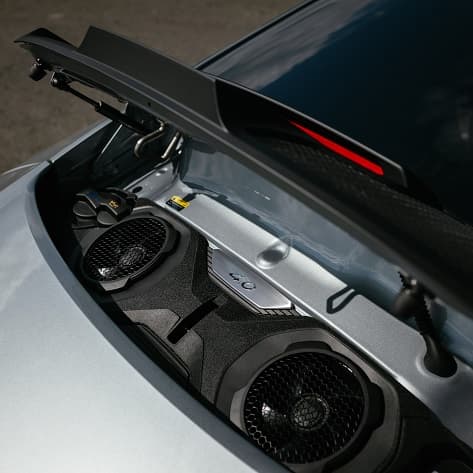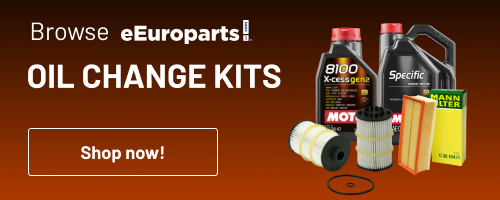As the lifeblood of the cooling system, Porsche coolant plays a crucial role in maintaining engine performance. It is one of the main components of the cooling system, regulating engine temperature to prevent damage.
A significant milestone in Porsche’s journey is the transition of the iconic 911 from air-cooled to water-cooled engines. Originally known for its air-cooled engines since the 1960s, Porsche shifted to water-cooled engines with the 1998 model 996. This change marked a new era for the 911, enhancing engine efficiency, temperature control, and power output while adhering to stricter environmental regulations.
This evolution from air-cooled to water-cooled engines demonstrates Porsche’s adaptation to technological advances and environmental consciousness. In this article, we will explore key aspects of Porsche coolant, including the replacement process, signs of coolant issues, and maintenance tips. Our goal is to provide Porsche owners with essential insights to ensure their vehicle’s longevity and optimal functionality, reflecting Porsche’s enduring legacy of innovation.
How to Choose the Right Porsche Coolant?
When selecting the right Porsche coolant, it’s important to consider the VW coolant specifications, as Porsche is part of the Volkswagen Group and shares many technical standards. Here’s how you can choose the right Porsche coolant based on the model year it was produced and its respective coolant type.
Inorganic Additive Technology (IAT) Coolant — G11
This type of coolant, typically blue-green in color, is used for Porsche models up to January 1, 1995. It corresponds to VW TL 774-C specifications and is the traditional choice for early Porsche models.
Organic Acid Technology (OAT) Coolant — G12/G12+
Recommended for Porsche models from January 1, 1996, to January 1, 2009, these coolants are free of silicates, often pink or orange, and align with VW TL 774-D/F. They provide long-lasting protection using organic corrosion inhibitors.
Hybrid Organic Acid Technology (Si-OAT) Coolant — G12++
For Porsche models from January 1, 2010, onwards, a pink-colored Si-OAT coolant is recommended, meeting the VW TL 774-G specification. It combines the advantages of both silicate and organic acid technology for enhanced corrosion protection.
Phosphated Organic Acid Technology (PSi-OAT) Coolant — G12 EVO
The latest Porsche models from June 1, 2018, require PSi-OAT coolant, which is typically pink in color and meets VW TL 774-L standards. This coolant is formulated for modern engines, offering superior protection and longevity, especially under high thermal loads.
Pentofrost® Coolant Range
Pentosin® is a German brand that is familiar to Porsche. It was used on Porsche’s various systems, such as steering fluid and PDK clutch oils. Pentofrost® by Pentosin® is an OEM Porsche coolant that complies with VW/Porsche’s requirements. It is a good alternative to Porsche’s genuine coolant and will definitely produce the same cooling system efficiency results without hurting your wallet. See the products below and their Porsche Part number counterpart.
Pentofrost® SF
Pentofrost® SF is an eco-friendly antifreeze concentrate tailored for various water-cooled engine applications, distinguishable by its pink color. It is formulated without nitrites, amines, phosphorous additives, or silicates. This product offers protection for all materials in cooling systems and is especially recommended for non-ferrous metals. Suitable for year-round use, Pentofrost SF meets the ASTM D-3306 standard.
- 000 043 203 78
- 000 043 300 31
- 000 043 300 88
- 000 043 203 79
Pentofrost® NF
Pentofrost® NF is a blue-colored antifreeze concentrate that is also environmentally friendly and designed for multipurpose use in water-cooled engines. It shares the same benefits as Pentofrost SF, being free from nitrites, amines, and phosphorous additives. Pentofrost NF ensures the protection of cooling system components and is recommended for non-ferrous metals. It is suitable for use throughout the year and meets the ASTM D-3306 standard.
- 000 043 203 78
- 000 043 300 31
- 000 043 300 88
- 000 043 203 79
Pentofrost® E
Pentofrost® E is an antifreeze concentrate designed for versatile applications in water-cooled engines, notable for its environmentally friendly approach and violet color. This coolant delivers performance comparable to Pentofrost® ++ but stands out due to its more eco-conscious manufacturing process, incorporating glycerin alongside the glycol base. It is free from nitrites, amines, and phosphorous-containing additives, aligning with environmental standards. Pentofrost E is formulated to protect all materials in cooling systems, making it suitable for non-ferrous metals and ideal for year-round use. Additionally, it is compatible with systems requiring VW G11, G12, G12+, G12++, G13, and MB G40 specifications and meets the ASTM D-3306 standard.
- 000 043 301 47
- 000 043 301 48
- 000 043 301 49
- 000 043 305 15
Does Porsche need a special coolant?
Porsche does not produce its own unique coolant; rather, it uses rebranded coolants that meet the specific requirements of its vehicles. It is essential for Porsche owners to ensure that the coolant matches the model year of their Porsche and the corresponding VW coolant specification.
This alignment is crucial for properly functioning and protecting the vehicle’s engine. If you are still unsure which Porsche coolant your car needs, refer to the vehicle’s owner manual or consult our customer support specialist to determine the appropriate coolant based on the Porsche and VW guidelines.
Porsche Coolant top-up? Do’s and Don’ts:
When topping up the coolant in your Porsche, there are some critical do’s and don’ts to follow to ensure your vehicle’s cooling system remains effective and problem-free.
Don’ts:
Don’t Mix Coolant Grades — It’s important to be cautious when dealing with different grades or brands of coolants. Mixing various formulations could result in less effective cooling, unforeseen chemical reactions, and altered coolant colors, potentially masking the true condition of your coolant. This might make diagnosing any cooling system problems more challenging. If you find yourself needing to use a different brand of coolant that meets the required specifications, it’s advisable to perform a coolant flush beforehand. This step helps maintain the effectiveness of your cooling system.
Do’s:
Check for Leaks — Before topping up, always check for signs of a coolant leak. Coolant levels should not drop significantly between service intervals, so a low coolant level could indicate a leak.
By adhering to these simple do’s and don’ts, you can help maintain the integrity of your Porsche’s cooling system and avoid unnecessary complications.
Can you add water to Porsche coolant?
Adding distilled water to your Porsche’s coolant is acceptable for minor top-ups, but always use the recommended Porsche coolant concentrate mixed with distilled water for more significant refills. Tap water should be avoided as it contains minerals and chemicals that can alter the coolant’s properties and lead to corrosion or scaling within the cooling system.
When Do You Need a Coolant Flush?
While Porsche does not outline a specific service interval for coolant flushing, it is advisable to perform a coolant flush every 4-5 years or every 50,000 miles, particularly if non-genuine coolant is used. A coolant flush may also be necessary under the following circumstances:
Engine Oil Mix — The presence of engine oil in the coolant is potentially due to a head gasket failure or a bad oil cooler module. If your car suffers from this, your engine needs a thorough coolant flush and probably an engine repair.
Discoloration — Over time, coolant can break down or react with engine components, leading to changes in color. A rusty or unusual coloration often indicates the presence of rust, metal particles, or other contaminants within the cooling system. This degradation reduces the coolant’s ability to regulate engine temperature efficiently and poses a risk of corrosion and scaling.
Mixed Coolant Grades — Flushing is recommended to ensure the cooling system’s integrity if it’s uncertain whether different coolant grades have been mixed. The composition of various products differs significantly, and combining them can result in serious compatibility issues.
Porsche Coolant Flush: Step-by-step guide
Performing a coolant flush on your Porsche involves several steps to ensure the cooling system is thoroughly cleansed and refilled with fresh coolant. Here’s a guideline on how to do it:
Safety and Preparation — Make sure the engine is cool. Park the vehicle on a level surface and open the hood.
Drain the Old Coolant — Locate the radiator drain plug at the bottom of the radiator or the radiator’s lower hose. Place a catch basin underneath and open the cooling system to drain the old coolant. Be sure to properly dispose of the old coolant, as it’s hazardous to the environment.
Flush the System — After draining, close the cooling system and fill it with a 15:85 mix ratio of Porsche coolant concentrate and distilled water. Start the engine and let it run until it reaches operating temperature, with the heater set to the highest setting. This allows the water to circulate and remove any remaining Porsche coolant and contaminants.
Drain the Water — Turn off the engine and allow it to cool before draining the water from the cooling system. The cooling system will not be completely flushed immediately, so it is a good idea to do this cycle at least three times.
Bleeding and Refilling with New Coolant — Once the system is completely cleaned, close the cooling system and fill it with a mixture of the appropriate Porsche coolant and distilled water using a vacuum-filling/bleeding tool for the cooling system. The correct coolant-to-water ratio is normally mentioned on the bottle of Porsche coolant you are using.
Final Checks — Once the cooling system is filled with fresh Porsche coolant, disconnect the vacuum filling/bleeding tool, close the cooling system, and start the car with the heater set to the highest setting. Ensure that the engine is not overheating and that there is no coolant leak as well.
Porsche Coolant Flush: How Much?
When it comes to performing a coolant flush on a Porsche, the cost can vary depending on the model, the vehicle’s year, and the Porsche coolant you will use. The cooling system can vary from 3.5 gallons (13L) to 8 gallons (30L) of coolant mixture. With this, expect to shell out $150 to $350 for a genuine Porsche coolant and $80 to $110 for an OEM Porsche coolant.
Get your Porsche Coolant from eEuroparts.com
As we end our comprehensive guide on Porsche coolants, it’s important to remember that choosing the right Porsche coolant is crucial for your Porsche’s optimal performance and longevity. For all your Porsche coolant needs, look no further than eEuroparts.com.
At eEuroparts.com, we understand the importance of using high-quality, compatible coolants for your Porsche. That’s why we offer a wide selection of Porsche-specific coolants that meet the exacting standards of your vehicle. Whether you’re in need of a complete coolant flush or just a top-up, our range of products ensures that you’re getting the best match for your Porsche.







